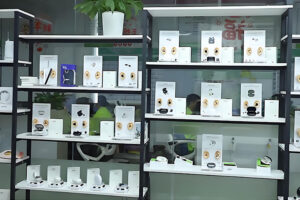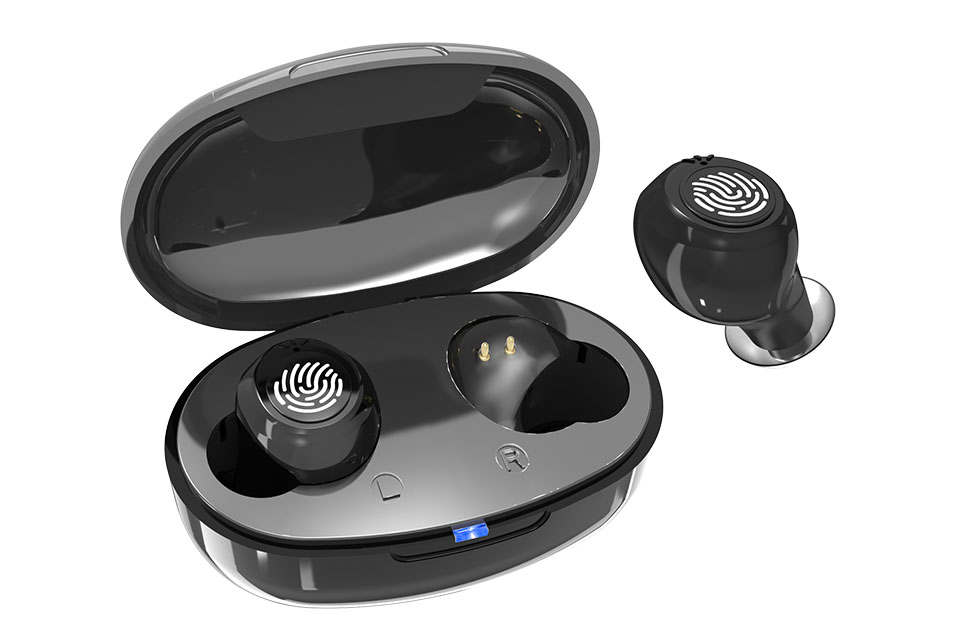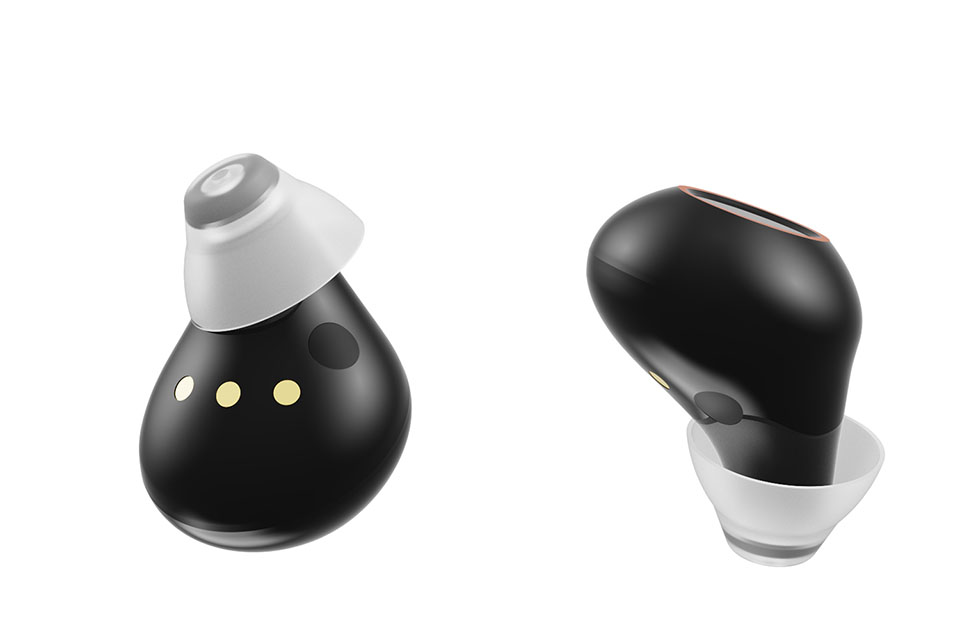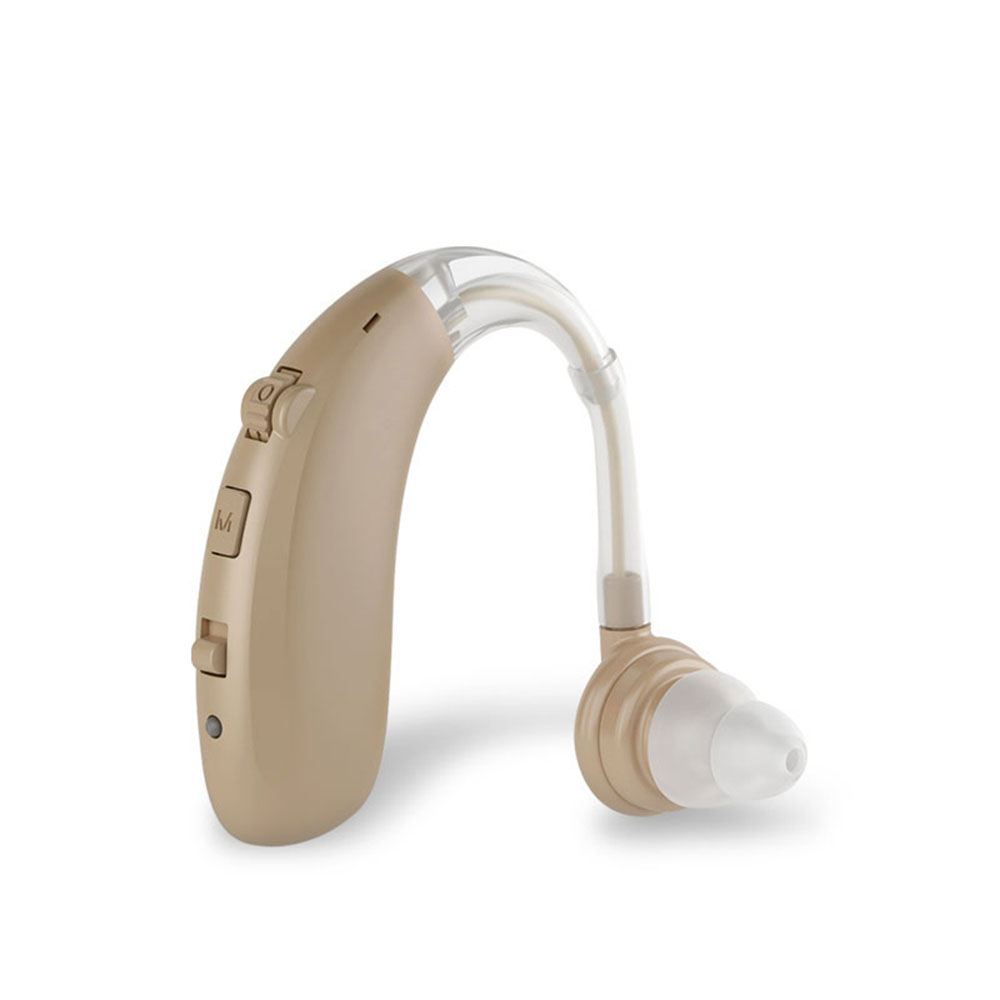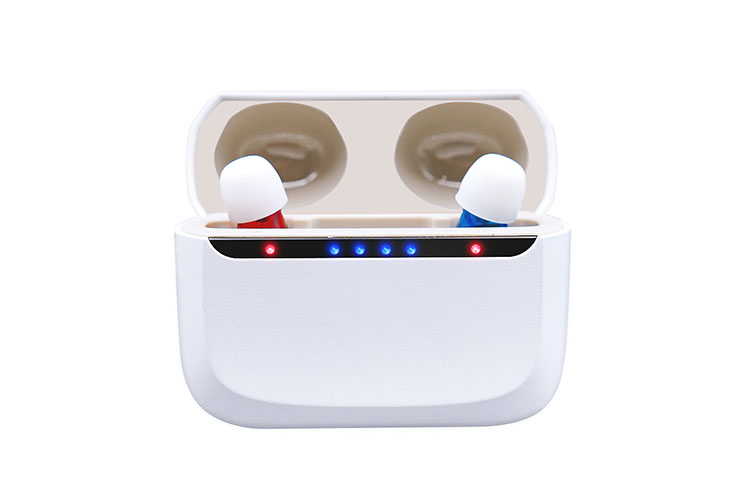Executive Summary
Do you want hearing aids that are easy to use, save money, and help the planet?
Are you looking for a partner who can make the best digital hearing aids for your brand?
You are not alone. The world is moving fast to rechargeable hearing aids. People want simple, smart, and green solutions. They want to charge once and use all day. They want to stop buying and throwing away tiny batteries. They want hearing aids that work with their phones and fit their lives.
Our Company is your best choice. We are a top China Hearing Aids Factory with over 10 years of experience. We make 3 million units every year. We use the latest tech: Bluetooth, DSP chips, and more. We are ISO-certified. We offer full OEM/ODM services. We help you win in the market with quality, speed, and value.
This report shows you:
- The newest tech in rechargeable hearing aids
- What users want and why they choose rechargeable
- How the market is changing
- The best business models for you
- The rules you need to know
- The big chances for your brand
Let’s see how you can lead with us.
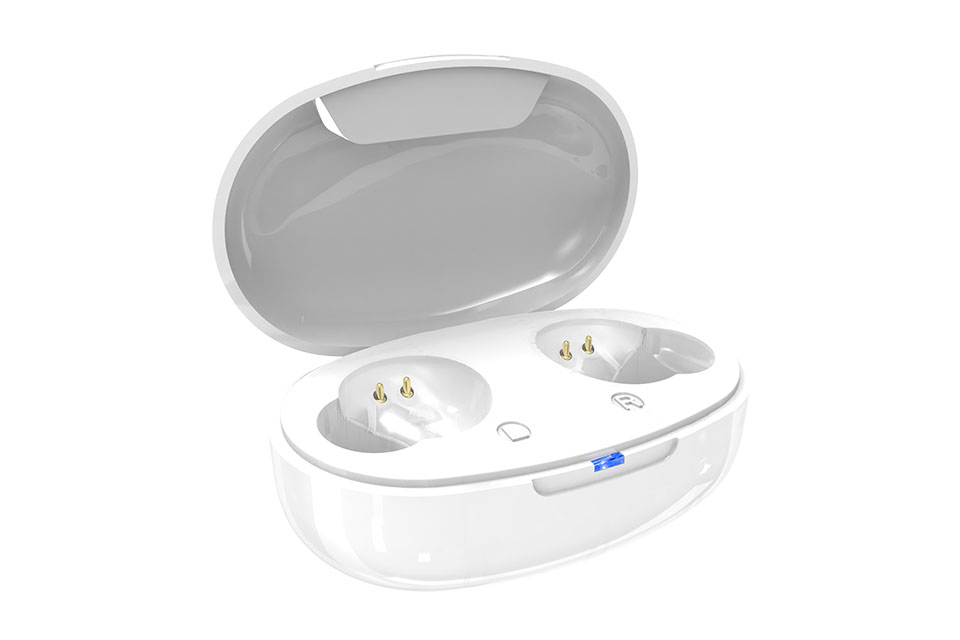
1. Technology Landscape: Rechargeable Assistive Devices
1.1 Battery Chemistries: The Heart of Rechargeable Hearing Aids
Lithium-ion (Li-ion) batteries are the top choice for new hearing aids. They give 24-30 hours of use per charge, even with streaming. They last 3-5 years (800-1000 cycles). Brands like Phonak, Oticon, Signia, ReSound, and Starkey use custom Li-ion cells. Varta Microbattery is a key supplier. The focus is on making batteries smaller, safer, and longer-lasting.
Solid-state batteries are coming. They are safer (no liquid inside), can store more energy, and may last longer. Some companies are testing them now. You may see them in special models by 2025, but big brands will use them more after 2026.
Silicon anodes in Li-ion batteries are a new trend. They can make batteries 10-30% stronger. This means longer use or smaller size. Some battery makers are adding this tech now.
Rechargeable zinc-air batteries are rare. They are safe and cheap but have problems with life and power. Some labs are working on better versions, but Li-ion is still better for now.
Patent activity is high. Companies want smaller batteries, better safety, and easier ways to make them. They also want new materials for longer life.
Manufacturers talk about “all-day power” and “quick charge” (30 minutes for 6 hours). They do not say much about the battery type. They focus on what users care about: easy, long use.
Environmental impact is a concern. Li-ion batteries are hard to recycle because they are small and built-in. Most end up as e-waste. New recycling programs are starting, but more work is needed.
Supply chain risks are real. Li-ion needs lithium, cobalt, and nickel. These are costly and sometimes hard to get. Cobalt is a worry because of where it comes from. Makers are trying to use less cobalt or find new battery types.
Energy density vs. cycle life is a trade-off. More power can mean shorter life. Makers must balance both.
Emerging alternatives like lithium-sulfur and metal-air batteries are in labs. They are not ready for hearing aids yet.
What this means for you:
You need a partner who can source the best batteries, keep up with new tech, and manage supply risks. We do all this for you.
1.2 Wireless Charging and Integration
Wireless charging is now common in hearing aids. Brands use Qi standard or their own systems. Users love it because it is easy—just drop and charge. No small ports, no fiddling. This is great for people with shaky hands.
Prosthetics and other medical devices are adding wireless charging too. It makes devices more sealed and safe from water and dust.
Medical wearables use wireless charging for better sealing and comfort. NFC wireless charging is good for small, low-power devices.
RF-based charging (like Energous WattUp) is new. It can charge devices from across the room. This is still early but could be big in the future.
Challenges:
- Heat from charging can be a problem. Devices must stay cool and safe.
- Coil alignment matters. If the device is not placed right, it may not charge well.
- Some brands use their own chargers, which can be less handy for users.
Cost:
Wireless charging adds to the cost, but it saves money over time (no broken ports, fewer repairs).
Miniaturization:
Wireless charging helps make devices smaller and more stylish.
User acceptance:
People want fast, safe, and easy charging. Wireless charging is a big plus.
Regulation:
Devices must meet safety and EMF rules. This can take time and money.
Future:
Imagine a home where all your devices charge wirelessly, no matter the brand. This is coming.
What this means for you:
We offer Rechargeable Hearing Aids with wireless charging. We can make custom chargers for your brand.
1.3 Integration with Smart Tech
Bluetooth and app control are now standard. Users want to connect to their phones, stream music, and adjust settings. Our Bluetooth Hearing Aids and APP Control Hearing Aids meet this need.
AI and sensors are coming fast. Hearing aids can now track health, detect falls, and adjust sound automatically.
What this means for you:
We use the latest DSP chips and smart tech. You can offer hearing aids that do more than just help hearing.
2. Market Trends and Consumer Adoption
2.1 Global and Regional Trends
Rechargeable hearing aids are now the top choice in new sales. In 2023, over 80-90% of new BTE and RIC hearing aids sold in the US and Europe were rechargeable. This is now the standard, not a luxury.
North America and Europe lead in adoption. People here have more money, know more about hearing health, and get good advice from audiologists. The US FDA’s OTC rule made it easier for people to buy hearing aids directly. Many new OTC hearing aids are rechargeable.
Asia-Pacific is growing fast. Japan, South Korea, Australia, and New Zealand are like the US and Europe. China, India, and Southeast Asia are catching up. Price matters more here, but more people want rechargeable as incomes rise.
What this means for you:
You need a partner who can make affordable, high-quality rechargeable hearing aids for all markets. We offer Low Cost Rechargeable Hearing Aids Dealers and Inexpensive Rechargeable Hearing Aids Wholesale.
2.2 Consumer Preferences
Older adults (65+) are the main buyers. They want easy-to-use aids. No more tiny batteries to change. Rechargeable is a must for them.
Younger users also like rechargeable. It fits their tech lifestyle.
Healthcare systems matter. In places with good public health (like the UK’s NHS), rechargeable aids are often free or low-cost. In private-pay markets, the price gap is closing.
Marketing focuses on “hassle-free,” “eco-friendly,” and “all-day power.” Users also want Bluetooth and app control.
Income levels:
Rich users adopt new tech faster, but as prices drop, everyone wants rechargeable.
Culture:
In tech-friendly places, people want the latest. In some cultures, there is still a stigma, but modern, stylish aids help.
OTC effect:
OTC hearing aids are pushing more brands to offer rechargeable as standard.
What this means for you:
We help you offer Rechargeable Hearing Aids Solutions for every user and market.
2.3 User Experience and Satisfaction
What users love:
- No more buying or changing batteries
- Save money over time
- Easy to charge, easy to use
- Good for the planet
What users want more of:
- Longer battery life (at least 16-24 hours)
- Fast, simple charging (wireless is best)
- Clear battery level info (not just a %)
- Standard chargers (USB-C, not special ones)
- Easy battery replacement when needed
What users worry about:
- “Battery anxiety” (will it last all day?)
- Hard to replace built-in batteries
- Charging can be tricky for some (small ports, shaky hands)
- Upfront cost (but total cost is lower over time)
What this means for you:
We design for real users. Our Rechargeable Hearing Aids are easy to use, last all day, and come with simple chargers.
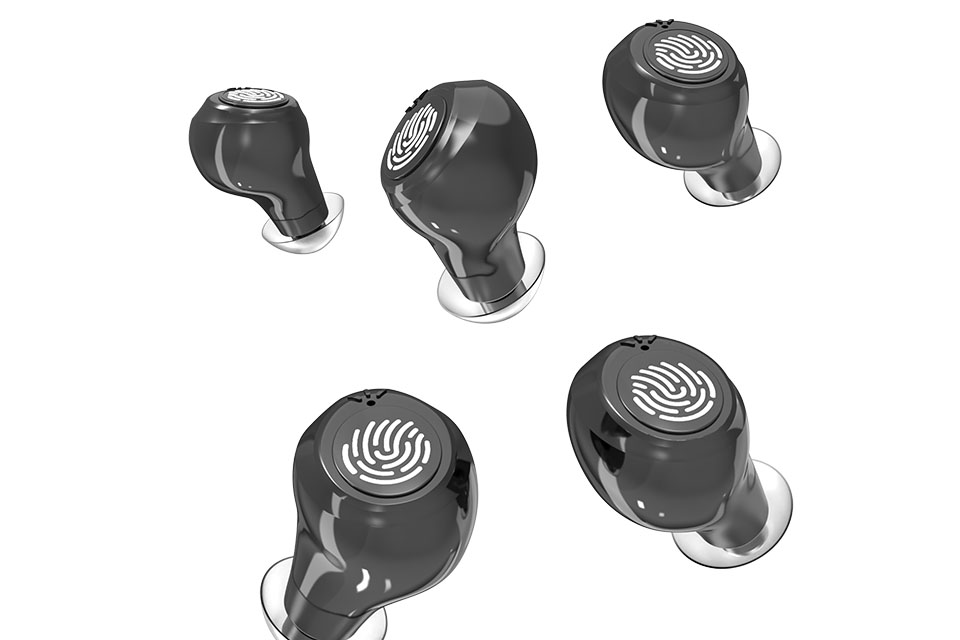
3. Business Models and Value Chain Implications
3.1 New Business Models
Subscription and leasing are growing. Users pay monthly for the device, service, and upgrades. This makes high-end aids more affordable.
Hardware-as-a-Service (HaaS):
The device comes with updates, remote support, and battery service. This keeps users happy and loyal.
Battery-as-a-Service (BaaS):
Users pay for battery performance and easy replacement. This is a new way to add value.
Data and AI:
Smart hearing aids collect data (with user consent). This helps improve service and can offer new features.
Insurance partnerships:
Some brands work with insurers to cover costs. This helps more people get the best aids.
Direct-to-consumer (D2C):
More brands sell online, with support and setup help. This cuts costs and builds loyalty.
Ecosystem integration:
Hearing aids work with phones, watches, and smart homes. This adds value.
Certified pre-owned (CPO):
Returned aids are refurbished and sold at lower prices. This is good for the planet and for users.
What this means for you:
We support all business models. We offer OEM/ODM and can help you build your own brand, service, and ecosystem.
3.2 Supply Chain and Manufacturing
Component sourcing:
We use top suppliers for batteries, chips, and parts. We manage risks and keep quality high.
Manufacturing:
Our factory is ISO-certified. We use advanced assembly for sealed, safe, and small devices.
Charging tech:
We make custom chargers and wireless solutions.
After-sales:
We offer battery replacement and repair services. We help you set up your own service network.
Inventory:
We help you manage stock, from BTE Hearing Aids to CIC Hearing Aids.
What this means for you:
You get a reliable partner who can scale with you and adapt to new tech.
3.3 Competitive Landscape
The “Big Five” (Phonak, Oticon, ReSound, Signia, Starkey) still lead, but new brands are rising fast, especially in the OTC and D2C space. Tech giants like Apple and Sony are entering with smart hearables.
Rechargeable is now standard.
Over 80-90% of new BTE and RIC aids are rechargeable.
Innovation matters:
AI, Bluetooth LE Audio, and health sensors are key. Brands that move fast win.
Barriers:
Prescription aids need big R&D and regulatory work. OTC is easier but needs strong marketing.
What this means for you:
With us, you get the tech and support to compete with the best. We help you stand out with custom solutions.
4. Regulatory and Policy Environment
4.1 EU Battery Regulation
New EU rules (2023/1542) are strict. By 2027, batteries in hearing aids must be removable by users or pros. Labels must show battery info and have QR codes. Some big batteries need a “digital passport.”
Carbon footprint and recycled content rules are coming. Makers must track and report materials and use more recycled metals.
Design impact:
Devices must be easier to open and fix. This may change how aids look and work.
WEEE and EPR:
Brands must collect and recycle old aids and batteries. We help you set up take-back programs.
What this means for you:
We design for compliance. We help you meet EU, US, and global rules.
4.2 US FDA and Global Standards
FDA wants safe batteries (IEC 60601-1, IEC 62133-2). Devices with software must be secure (cybersecurity rules). Batteries must be safe to ship (UN 38.3).
Other countries have their own rules. We track them all.
What this means for you:
We test and certify all products. You can sell worldwide with confidence.
5. Strategic Opportunities and Future Outlook
5.1 Disruptive Technologies
Ambient energy harvesting:
Future aids may use body heat, movement, or light to charge. This could mean “no more charging” for some devices.
AI power management:
Smart chips can save power and predict when to charge or replace batteries.
Far-field wireless charging:
Soon, aids may charge anywhere in a room, not just on a pad.
Solid-state batteries:
Safer, smaller, and longer-lasting batteries are coming.
Biofuel cells:
Some labs are making batteries that run on body fluids. This is early but exciting.
Structural batteries:
The device frame itself stores power. This saves space and weight.
Ultra-low power chips:
New chips do more with less power, so batteries last longer.
Modular batteries:
Hot-swappable batteries could mean no downtime.
What this means for you:
We invest in R&D and follow all new trends. We help you stay ahead.
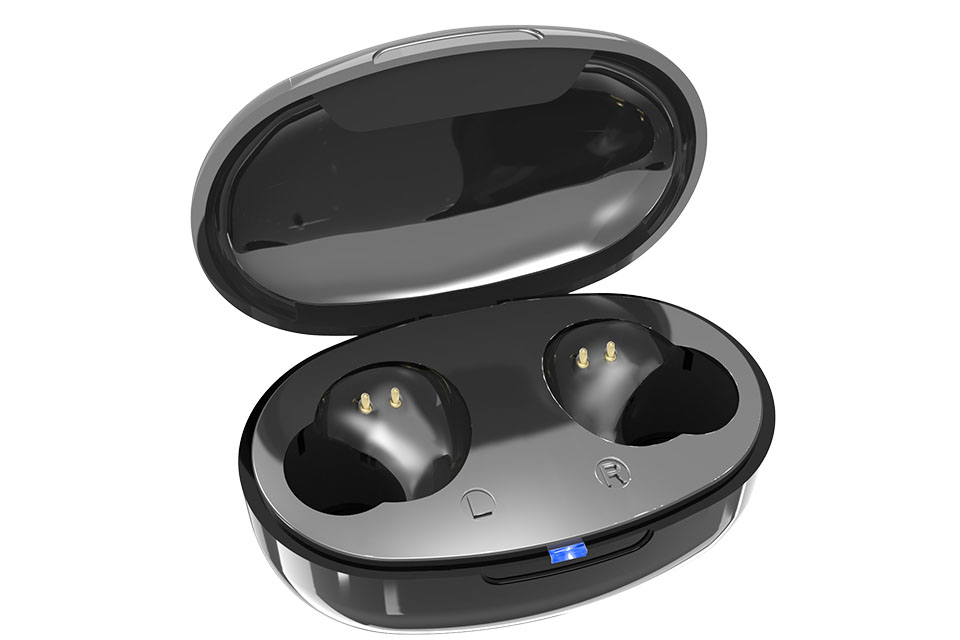
5.2 Environmental and Social Impact
Rechargeable aids cut battery waste by up to 200 batteries per user per year. This is good for the planet.
Li-ion batteries are harder to recycle, but new programs are starting. We help you set up recycling.
Device e-waste is a challenge. We design for longer life and easy repair.
Resource use:
Li-ion needs rare metals. We work with suppliers to use less and recycle more.
Packaging:
Rechargeable aids mean less packaging waste over time.
What this means for you:
You can market your aids as green and responsible. We help you meet all rules and tell your story.
6. Why Choose Us: Your Best Partner for Rechargeable Hearing Aids
6.1 Our Advantages
- 10+ years’ experience in digital hearing aids
- ISO-certified factory
- 3 million units/year capacity
- Latest tech: Bluetooth, DSP, wireless charging
- Full OEM/ODM service
- Custom design for your brand
- Fast delivery and strong support
- Global compliance and quality
6.2 What We Offer
| Feature | Our Advantage | Your Benefit |
|---|---|---|
| Battery Tech | Latest Li-ion, solid-state ready | Long life, safe, all-day use |
| Wireless Charging | Qi, custom, fast options | Easy for all users |
| Smart Features | Bluetooth, app, AI, sensors | Modern, connected, future-proof |
| Manufacturing | ISO, advanced, high volume | Quality, speed, scale |
| Custom Service | OEM/ODM, design, branding | Stand out, build your brand |
| Compliance | EU, US, global ready | Sell anywhere, no worries |
| Green Solutions | Less waste, recycling help | Market as eco-friendly |
6.3 How We Help You Win
- Meet user needs: Easy, long-lasting, smart, green
- Beat the market: Fast to new tech, best value
- Grow your brand: Custom products, your logo, your story
- Stay safe: All rules met, all markets open
7. Next Steps
Ready to lead the market?
Want to offer the best rechargeable hearing aids?
- Visit our Rechargeable Hearing Aids page
- See all Hearing Aid By Types
- Explore Bluetooth Hearing Aids and Digital Hearing Aids
- Contact us for OEM/ODM solutions
Let’s build the future of hearing together.
Internal Links
- China Hearing Aids Factory
- Rechargeable Hearing Aids
- Bluetooth Hearing Aids
- Digital Hearing Aids
- OEM/ODM Solutions
Choose us. Make hearing easy, smart, and green.

